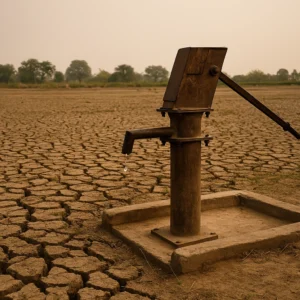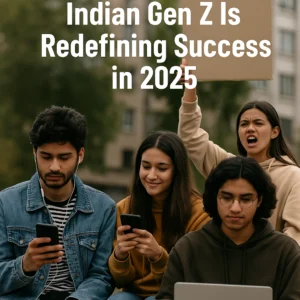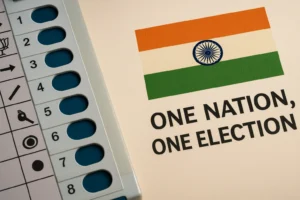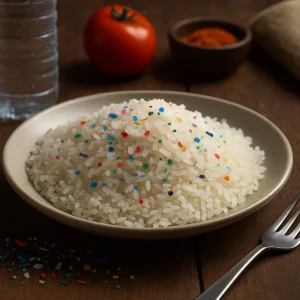One Nation, One Election: A Dream Worth Pursuing or Just Clever Politics?

An EVM alongside the Indian flag and the slogan "One Nation One Election" — highlighting the nationwide debate on synchronizing elections across India.
It’s an idea that seems to resurface every few years—usually just after a big election. “Why don’t we just hold all elections at once?” a middle-aged lawyer from Kanpur asked me casually as we sipped cutting chai near the city’s civil court. He wasn’t the only one pondering this. Across India, from TV studios to town halls, a three-word phrase has once again returned to the national conversation: One Nation One Election.
On the face of it, the concept feels almost elegant in its simplicity. Why stretch out elections across the year, dragging along government machinery, media noise, and campaign fatigue, when we can combine it all into a single mega exercise?
But in India, things are rarely that simple.
Table of Contents
The Charm of a Clean Slate
Those in favor of One Nation One Election don’t hesitate to lay out its supposed advantages. Less expenditure. More stability. Fewer interruptions to governance. The Model Code of Conduct, after all, pauses government activity for weeks every time a state goes to vote. If you add up the number of state elections and by-elections we face each year, you start to see why some argue India is in permanent campaign mode.
Prime Minister Narendra Modi has backed the idea since his first term. “It’s time to stop wasting time and money,” he once said during a parliamentary address, calling for a more synchronized system that would let governments work without the constant burden of campaigning.
And truth be told, the idea has its appeal—especially in theory.
The Reality on the Ground
But theory doesn’t always survive contact with India’s ground realities.
Elections here are not just a process; they are political rituals, cultural events, and for many, the only way to hold those in power accountable. Synchronizing elections across Lok Sabha, state assemblies, and local bodies sounds tidy, but the path to get there is anything but.
India’s federal structure doesn’t operate on a fixed national script. State governments are elected independently and at staggered intervals for a reason. To align them all into one master schedule would mean either cutting short or extending existing assembly terms. That’s no small ask—it would involve major constitutional overhauls, legal acrobatics, and, more importantly, consensus among states that rarely agree on anything political.
“Why should my state’s term be shortened just to match Delhi’s convenience?” asked a regional party leader from Tamil Nadu during a closed-door meeting I attended earlier this year. He had a point. States cherish their autonomy, and any move that even slightly sniffs of central overreach is met with immediate resistance.
Is This About Efficiency—or Control?
There’s a deeper anxiety hiding beneath the surface. Critics argue that One Nation One Election could tilt the scales toward national parties. When national and state issues are decided on the same day, there’s a strong chance that local concerns get drowned out by the louder voice of central leadership.
Imagine voting for your MLA and your MP on the same day, while all you see on TV and social media are campaigns for the Prime Minister. Where does that leave the local school or the broken road in your neighborhood?
“I fear we’ll end up with one vote deciding everything—from panchayat to Parliament,” a political science professor told me during a seminar in Kolkata. “That’s not democracy. That’s a shortcut.”
Also read our article on India Clean Energy Surge: Bold Moves Toward a Greener Future.
The Logistics Are a Monster
Even if you put aside the constitutional and political challenges, the logistics are staggering. One election across all of India would require a vast pool of trained personnel, thousands of extra voting machines, security forces, transport arrangements—the list is endless.
Remember, the 2019 Lok Sabha election alone stretched over seven phases and 39 days. Now imagine adding 28 states and 8 union territories to that mix—some of them with violent insurgencies, others with severe logistical bottlenecks. It’s not just a challenge—it’s a Herculean task.
And what happens if a state government falls mid-term due to no-confidence or internal splits? Will we wait five years to vote again? Or hold separate elections, thus breaking the very structure we’re trying to build?
What Do Ordinary Voters Think?
Outside the echo chambers of Delhi, reactions are mixed. Some people like the sound of One Nation One Election, especially business owners and middle-class voters tired of the endless political noise.
“It’s just too much. Every few months we hear speeches, see rallies, and get dragged into debates,” said Anjali Mehta, a boutique owner in Indore. “I just want to vote and move on.”
But many others, especially first-time voters and those from rural areas, view elections as their moment of power. “I wait for election time to question my neta,” said Raju, a daily wage worker in Patna. “Why should I lose that chance just because Delhi wants to do things faster?”
You can also read Joint Parliamentary Committee on ‘One Nation One Election’ held meeting at Parliament House .
The Verdict: Still Just a Slogan?
So, is One Nation One Election a genuine democratic reform—or a carefully packaged slogan meant to centralize power and simplify politics at the cost of diversity?
In truth, it might be both.
There’s no denying the appeal of reducing costs, curbing political chaos, and increasing administrative efficiency. But there’s also no escaping the fact that democracy isn’t just about convenience. It’s about representation, accountability, and respecting the mosaic of voices that make up India.
Until we find a way to align efficiency with equity, this idea will remain just that—an idea. One that sparks debate every few years, makes headlines, but never quite takes root.





I like the efforts you have put in this, regards for all the great content.